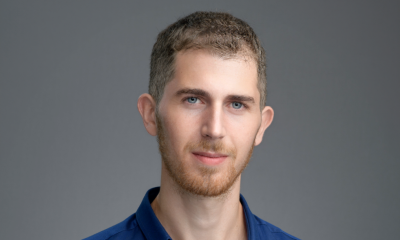Interviews
Saurabh Giri, CPTO of Voltage Park – Interview Series

Saurabh Giri serves as the Chief Product and Technology Officer at Voltage Park and is an executive director on its board. He is responsible for driving the company’s strategic vision, defining its product roadmap, and running engineering operations. Previously, Saurabh led teams that built, launched, and operated Amazon Bedrock, Amazon’s platform for generative AI. Earlier in his career, Saurabh co-founded and served as CEO of a next-generation payments platform; co-founded an algorithmic trading firm specializing in market making and curve arbitrage in the futures markets; and advised boards and management teams on strategy, operations, and financial matters.
Voltage Park’s mission is to help enterprises transform data into business intelligence using AI, by making AI infrastructure accessible to all. With tens of thousands of GPUs across six data centers, Voltage Park offers world-class hardware and customer service at incredible value – irrespective of whether the customer is a researcher, a startup, or a large enterprise.
You’ve worked at both startups and one of the world’s largest cloud providers. What originally drew you to the world of infrastructure and AI?
Generative AI is going to be transformational in a step change way that few technologies have in the last century. What is possible today with frontier models like OpenAI’s GPT-5 would have been inconceivable ten years back and surprising even three years back.
We are still in the early innings. The draw for me is the opportunity to shape the infrastructure layer that determines how such a profound technology will be harnessed – for science, for industry, and for society at large.
At AWS, you helped build Amazon Bedrock. What product engineering lessons from that experience are you applying at Voltage Park?
Amazon Bedrock broke new ground in many ways, and I’m really proud of what the Bedrock team was able to accomplish quickly. Bedrock’s core insight was that builders needed an abstraction layer that made model choice and modality transparent – freeing them to focus on building solutions rather than managing infrastructure complexity. It was the first industry platform to provide seamless access to multiple foundation models – text, vision, and multimodal – without requiring teams to navigate model-specific APIs or hardware constraints.
Foundation model capabilities are advancing at a staggering pace – faster than prior technological shifts such as cloud computing, mobile, or even the internet itself. My Bedrock team shipped innovation at that speed, anticipating where model capabilities would be two or three generations ahead and building for that future.
At Voltage Park, we’re applying the same principle: Move fast to deliver cutting-edge infrastructure and software abstractions that solve today’s pain points while engineering for where the technology is headed and what customers will need when the technology of the future arrives.
What were the biggest technical and cultural shifts in moving from a hyperscaler to a capital-efficient startup like Voltage Park?
At a hyperscaler, engineering exists inside a vast, mature ecosystem – tooling, compliance, marketing, customer delivery – where the whole exceeds the sum of its parts. In a startup, you trade those tailwinds for velocity, cohesion, and impact. There’s no sprawling bureaucracy to slow you down, but there’s also no prebuilt scaffolding – you have to create your own. The reward is cultural cohesion and the ability to ship high-impact products in a fraction of the time.
Voltage Park owns 24,000-plus H100 GPUs and offers bare-metal access at competitive pricing. What customer segments are you primarily targeting?
Our platform spans bare metal, virtual machines, managed Kubernetes, managed Slurm, and a complementary software stack designed for AI workloads. We serve anyone building AI products or building with AI: researchers, startups, and enterprises. Some of the most sophisticated model builders in the world today, such as Cursor, which is pushing the state of the art in machine learning science and engineering, are training their models on Voltage Park. Similarly, many well-known AI product companies are running inference workloads at Voltage Park. For enterprises, we’re lowering both the cost and expertise thresholds to move from prototype to production easily and scale workloads reliably.
How are you managing power usage, cost efficiency, and sustainability as you scale your infrastructure footprint?
We have made and continue to make significant investments in running our data centers efficiently. We’ve engineered significant gains in power usage and cost through innovations such as AI-driven predictive maintenance, which reduces downtime and avoids waste compared to reactive servicing. The majority of our current footprint is powered by 99%-plus renewable and green energy, and that ratio will grow as we expand.
How are partnerships and standards shaping Voltage Park’s evolution as a full-stack AI infrastructure provider?
We partner with companies that are moving AI from theoretical to transformational. A good example is our investment in Matrice.ai, where we led their seed expansion. Their domain expertise in vision models enables our customers to convert pixels into intelligence with vertical-specific solutions across multiple industries. We will continue to provide the AI infrastructure backbone to model providers to deploy their models in a modular, integrated hardware–software stack that delivers performance without compromising security or data privacy.
We’re also an active contributor to the open-source community – supporting, for example, SGLang as their infrastructure partner to bring high-quality, open-source projects like SpecForge to the community. And we’ve partnered with the U.S. National Science Foundation to support the National AI Research Resource (NAIRR) pilot, a public-private initiative to expand access to cutting-edge AI tools for researchers and educators nationwide.
What enterprise-grade management, auditability, or security features are you prioritizing for AI developers?
Security, data privacy, and compliance are foundational features of our AI factory platform, and our customers have the peace of mind of working with an enterprise-grade stack. As we build out our software stack to address additional customer pain points, we are adding features such as granular resource and data permissions, tiered audit trails, safety guardrails, and seamless integration with enterprise data pipelines, APIs, and agent frameworks. The goal is to give customers the agility of the cloud with the control of an on-prem environment.
What advice do you have for AI researchers and infrastructure teams aiming to scale effectively in today’s compute-constrained environment?
AI researchers and companies should try to minimize the time they spend dealing with infrastructure challenges, since it is undifferentiated, and take advantage of higher-level primitives such as managed Kubernetes and Slurm. Pick partners who offer transparent pricing, expert operational support, and exceptional engineering expertise to help troubleshoot issues. Those factors will accelerate both your experimentation and your scale-up.
Where do you see Voltage Park in three years—further down the stack toward full AI-as-a-service, or branching into new areas like edge compute?
Three years in the AI landscape is an epoch. We are a customer-first company and in three years, as now, will be focusing on real world customer pain points, whether in the context of building AI products or consuming them. I expect that we will have much more sophistication in the breadth and depth of our software stack, and a track record of helping the world’s leading companies accelerate adoption of AI at scale.
Thank you for the great interview, readers who wish to learn more should visit Voltage Park.












